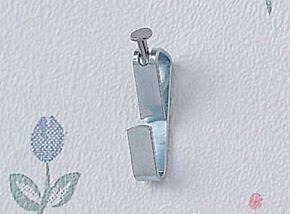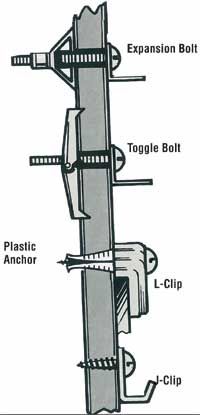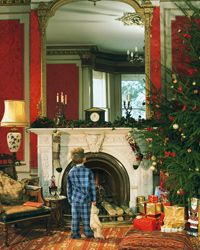Key Takeaways
- For hanging heavy objects, use expansion anchors or toggle bolts, which are designed to expand and lock inside the wall for a secure hold.
- The installation process includes drilling a hole of the proper size, inserting the fastener and securing the bolt through the object to be hung.
- For extremely heavy items like cabinets, toggle bolts are recommended, requiring specific steps to ensure the toggle opens behind the wall for maximum support.
Pictures, mirrors, shelves, lamps, tools, sports equipment -- the list of items you can hang on walls is almost endless. To keep them hanging where they belong, you need to choose the proper fastener and install it in the proper way.
Most wall framing is covered with drywall that typically measures 1/2 or 5/8 inch thick. To hang lightweight and medium-weight objects, you need only pierce this covering with a nail or expandable plastic screw anchor. Heavier objects, such as a large mirror, should be supported by hardware that either attaches to the wall framing or clamps securely to the wall surface from behind.
Advertisement
The wooden framing in walls, called studs, are typically spaced 16 inches apart. You can locate studs with an electronic stud finder that detects the nails that hold the wall covering to the studs. If you don't own this handy device, you can measure 16 inches from a corner of the room and begin knocking the wall with your knuckles. If the wall sounds more solid at a point exactly 16 inches from the corner, there's a stud there; you'll most likely find other studs, spaced in increments of 16 inches from the first, along the length of the wall. If you hear a hollow sound at a point 16 inches from the corner, go to the opposite end of the wall, measure 16 inches, and knock. You'll probably find a stud there, because carpenters always space studs from one end of the wall or the other.
Advertisement



